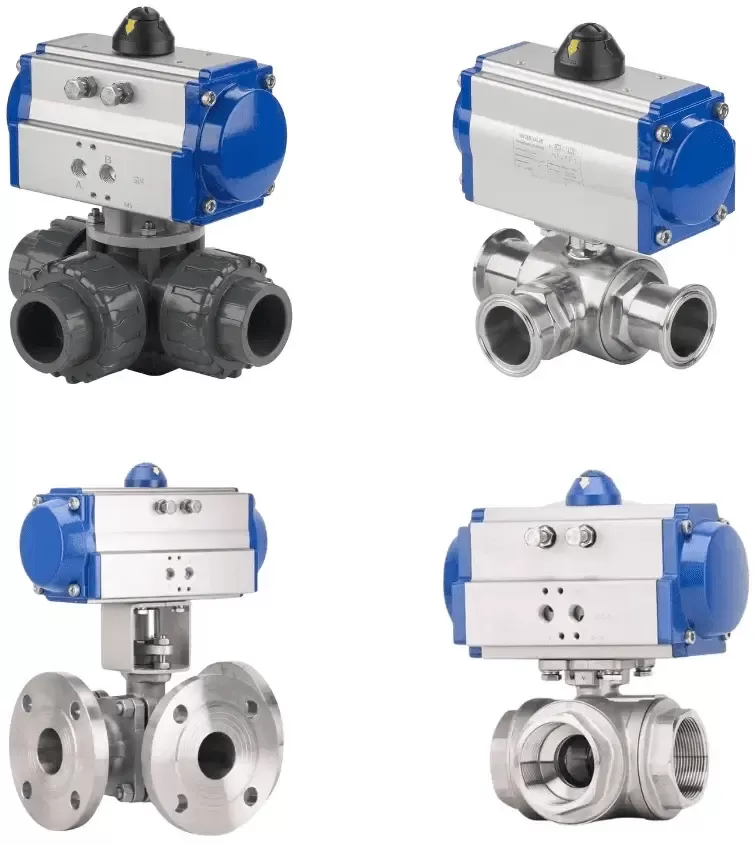Notifications

7 minutes, 27 seconds
-34 Views 0 Comments 0 Likes 0 Reviews

In today’s increasingly automated industrial landscape, the demand for precise, efficient, and flexible fluid control solutions has never been greater. From large-scale water treatment plants to complex manufacturing lines, industries depend on advanced valve systems to regulate the flow of liquids and gases with minimal human intervention. Among these, pneumatic three-way ball control valves stand out as vital components that provide exceptional versatility and performance in fluid management systems.
These China Control Valves simplify flow diversion, mixing, and shut-off processes within a single compact unit. By combining pneumatic actuation with a three-port configuration, they enable users to handle complex flow patterns with speed, accuracy, and minimal leakage risk. Whether applied in chemical processing, HVAC systems, water treatment facilities, or hydraulic and pneumatic circuits, pneumatic three-way ball valves ensure smooth, safe, and efficient operation.
This article explores how pneumatic three-way ball control valves work, the technology behind their performance, their flow configurations, and the value they bring to industrial applications. We also discuss why partnering with experienced manufacturers is crucial for optimal system efficiency and safety.
At its core, a three-way ball valve merges the simplicity of a conventional ball valve with the added ability to direct flow among multiple channels. Pneumatic actuation automates this process, allowing rapid, remote-controlled switching that reduces manual labor and human error.
Key Features:
Three-Port Configuration: Enables diverting, mixing, or completely shutting off flow between different sources.
Pneumatic Actuation: Uses compressed air for quick, reliable valve operation.
Robust Sealing: The ball mechanism ensures excellent leak prevention.
Material Durability: Commonly constructed from stainless steel, carbon steel, or specialized alloys to resist corrosion and withstand high pressures.
This combination makes pneumatic three-way ball control valves a preferred choice for engineers needing flexible, automated, and dependable fluid control.
Though the exterior design is straightforward, their operation involves precise coordination between the actuator, valve stem, and ball:
Signal Reception: The pneumatic actuator receives a control signal—via a controller, sensor, or manual input—directing it to open, close, or redirect flow.
Rotation Drive: Compressed air powers the actuator to rotate the valve stem, which turns the internal ball.
Flow Control: The ball, with a drilled bore, aligns with different ports based on its position, allowing the valve to:
Allow full flow through one pathway.
Divert flow from one inlet to two outlets.
Mix two inlets into a single outlet.
Shut off flow entirely.
Configuration Flexibility: Internal ball designs come as either L-port or T-port configurations, customizing flow patterns as needed.
Actuation Reliability: Pneumatic actuation offers fast cycling, fail-safe spring-return options, and lower maintenance compared to electric or hydraulic systems.
L-Port Valves: Feature an "L"-shaped flow path, ideal for diverting flow between one inlet and two outlets without mixing. Perfect for simple switching tasks.
T-Port Valves: Have a "T"-shaped flow path, enabling mixing two inlets into one outlet or splitting one inlet into two outlets simultaneously. Used for blending or bypass applications requiring flexible flow control.
The choice depends on the specific process requirements.
Precise Flow Control: Automated switching ensures accurate fluid routing, reducing waste and optimizing performance.
Fast Operation: Pneumatic actuators respond rapidly, essential for safety-critical or dynamic systems.
Enhanced Safety: Automation minimizes manual intervention in hazardous environments; tight sealing prevents leaks of flammable or toxic media.
System Flexibility: Ability to divert, mix, or isolate flows offers comprehensive process control.
Durability and Reliability: Engineered to withstand high pressure, extreme temperatures, and corrosive fluids for long service life.
Easy Integration: Compatible with sensors, controllers, and distributed control systems (DCS) in modern plants.
Water Treatment: Flow regulation between filtration, chemical dosing, and distribution systems.
Pneumatic Systems: Controlling compressed air or inert gases to actuate machinery.
Hydraulic Systems: Directing fluid flow to maintain pressure and motion in hydraulic cylinders and motors.
Chemical Processing: Batch mixing, flow diversion, and emergency shutdown in corrosive environments.
HVAC and Building Automation: Managing chilled or heated water flows to optimize energy use.
Food & Beverage: Diverting and mixing during processing, cleaning, and CIP operations.
Consider:
Flow Requirements: L-port or T-port based on desired flow patterns.
Material Compatibility: Match materials to fluid chemistry and operating conditions.
Actuation Needs: Double-acting or spring-return actuators depending on failsafe requirements.
Size and Pressure Ratings: Ensure proper sizing for flow capacity and system pressure.
Compliance: Confirm relevant industry standards and certifications.
Reliable valve performance and uptime hinge on quality manufacturing and expert support. Trusted suppliers offer tailored solutions, technical guidance, and maintenance services—reducing risks of failure, downtime, and safety incidents.
Advances in smart actuators, IoT-enabled sensors, and predictive maintenance are transforming valve technology. Remote diagnostics will help detect wear or leaks early, minimizing unplanned downtime and boosting efficiency. New materials and designs will allow operation under increasingly demanding conditions, ensuring these valves remain essential in next-generation automated plants.
Pneumatic three-way ball control valves are versatile, reliable solutions for modern fluid management. Their ability to precisely divert, mix, or isolate flows enhances productivity and safety across diverse industries. Investing in high-quality valves from trusted manufacturers ensures long-term reliability and adaptability, supporting the evolving needs of automated industrial systems.Know more about Google SEO Directory

